History about Troubles in Northern Ireland was in CNN Series over the Weekend and I thought you might want to share in the view to Get informed and compare notes........ Judy Miriga Diaspora Spokesperson Executive Director Confederation Council Foundation for Africa Inc., USA http://socioeconomicforum50.blogspot.com September 28th, 2012 04:09 PM ET Highlights By the CNN Wire Staff (CNN) - Colombian President Juan Manuel Santos said that FARC guerillas must be permitted to participate in the political process, in an interivew with CNN's Christiane Amanpour that aired Friday. Members of the Revolutionary Armed Forces of Colombia, known as FARC, are scheduled meet with representatives of the government for peace talks in Oslo, Norway, next month. The two sides have been at war since the 1960s, making the FARC Latin America's oldest insurgency. "You can't ask the FARC to simply kneel down, surrender and give us the arms. They will not do that, so there has to be some kind of way out, and this way out has to be you can be able to participate in the political arena. This is a way any conflict is settled, not only the Colombian conflict," Santos said in New York. He was in town for meetings at the United Nations. The president stressed that there would be no cease-fire while the two sides are in talks, though the rebels have said they would ask for one. "I've told them there will be cease-fire and we will stop any military operation when we reach a final agreement," he said. "And if I see that there's no progress, that they are simply trying to buy time, I will stand up and continue business as usual. And that's why there's no cease-fire, no decrease in our military operations, and my government agenda will continue as it was until then." Still, Santos said he was hopeful about the prospect for peace. The sides were able to negotiate a "short" and "pragmatic" agenda, he said. "This was a tremendous breakthrough, because so far, they have insisted in negotiating the causes of the conflict, which is foreign investment, social policy, international relations. I told them: 'That could be discussed in Congress when you win an election but not in the negotiating table, armed. That is a no-no.' " Peace talks between the rebels and the government have occurred sporadically since the 1980s. The last attempt fell apart in 2002. Then-President Andres Pastrana ceded an area the size of Switzerland to the guerrilla group but ended negotiations after rebels launched a series of attacks across the country in an apparent bid to strengthen their position. The FARC continues to carry out kidnappings and attack security forces, though it has been severely weakened in recent years, thanks in part to a U.S.-backed security campaign. "I knew that if you did not strike them hard, you would never take them to a negotiating table. Modesty apart, in 50 years, nobody has hit them as hard as I have. Making war is much easier than making peace," Santos said. When asked whether he felt the group was on its "back foot," the president replied, "This is a fact. "Militarily, they cannot take over any of the towns or any military bases. They can only do terrorism, which is a show of weakness. But in every struggle, in every conflict like this one, you have to try to find a negotiated end to the conflict, and that's why I think the conditions are right to find this negotiated end." Also helping encourage talks at this time, Santos said, are the participation of other countries - including Norway, Cuba and Venezuela - and the fact that the rebels are realizing that their goals cannot be achieved through violence. Santos said he had been thinking about the possibility of peace ever since the FARC's military commander was killed in 2010. He defended himself against his critics, chief among them former President Alvaro Uribe, under whom he served as defense minister. The two are now rivals, and Uribe has accused Santos of neglecting the nation's security in favor of negotiating with terrorists. "Some people think that peace can be achieved by killing the last member of the FARC, and that is not possible," Santos said. Talks between the government and rebels are scheduled to start in Oslo on October 8.
Secret History of the IRA
http://www.youtube.com/watch?v=b-OLntfimU0
the IRA 1956-1962 part 1 of 3 http://www.youtube.com/watch?v=KdSlEe91VgE Published on Apr 20, 2012 by dubinboston IRA activity fron 1956 - 1962 including raids on british barracks in ireland and england and the deaths of sean south and fergal o'hanlon
the IRA 1956 - 1962 part 2 of 3 http://www.youtube.com/watch?v=r-PRoA_zz-g Published on Apr 20, 2012 by dubinboston IRA activity fron 1956 - 1962 including raids on british barracks in ireland and england and the deaths of sean south and fergal o'hanlon
the IRA 1956-1962 part 3 , final part http://www.youtube.com/watch?v=BtoXtA0T9q4 Published on Apr 20, 2012 by dubinboston IRA activity fron 1956 - 1962 including raids on british barracks in ireland and england and the deaths of sean south and fergal o'hanlon
A Secret History of the IRA (Penguin, 2002; 2007) by award-winning journalist Ed Moloney. In The Blanket, an on-line journal, reviewer Liam O Ruairc described the book as potentially "the standard if not the definitive work on the history of the Provisional IRA".[1] Eamonn McCann, in The Nation, commented that it was "the best book yet" written on the Provisional IRA as it traced the rise of the Provos from the burning out of Catholic neighborhoods in Belfast in August 1969 to "the enclosure of the movement's leadership within conventional bourgeois politics through the Good Friday Agreement of 1998" (Belfast Agreement).[2] A central theme in the book is the role that Sinn Féin President Gerry Adams has played in the Irish Republican Movement. In his review, O Ruairc noted that the book could have been "better titled A Secret History of Gerry Adams".[3] In the Sunday Business Post Online, reviewer Tom McGurk, in a reference to the strategy articulated by Danny Morrison at the 1981 Sinn Féin Ard-Fheis, wrote that the book "grippingly" detailed Adams's struggle to move from the Armalite to the ballot box "without a split and without bodies in ditches".[4] The book was met with controversy because of some of the revelations it contains. And those revelations reveal both a strength and weakness, in that some of Moloney's sources were willing to speak in great detail but with the caveat that they remain confidential. Secret History of the IRA (Part 1 of 5)History of the IRA during the border campaign.by MumblesOg Many innocent people died as a result of I.R.A bombs but those people were not the targets.Example,2 innocent people died in the Canary Wharf bombing but Canary Wharf was targeted because its the financial hearth of London.It wasnt bombed to kill innocent people.Same as Guildford pub bomb.Targeted because it was popular with off duty solders.1 innocent civilian died along with 4 British soldiers.Unlike the I.D.F and The U.S, The I.R.A. did NOT target innocent civilians Secret History of the IRA (Part 2 of 5) Uploaded by MumblesOg on Mar 15, 2010 History of the IRA during the border campaign. Secret History of the IRA (Part 3 of 5) Uploaded by MumblesOg on Mar 15, 2010 History of the IRA during the border campaign. Secret History of the IRA (Part 4 of 5) Uploaded by MumblesOg on Mar 15, 2010 History of the IRA during the border campaign. Secret History of the IRA (Part 5 of 5) Nazis In Ireland (Part 1 of 5) Uploaded by MumblesOg on Feb 2, 2010 A great documentary about Ireland harboring Nazis after World War II, partially as a result of their neutrality. A complex issue, but interesting none the less. Nazis In Ireland (Part 2 of 5) Uploaded by MumblesOg on Feb 2, 2010 A great documentary about Ireland harboring Nazis after World War II, partially as a result of their neutrality. A complex issue, but interesting none the less. Nazis In Ireland (Part 3 of 5) Uploaded by MumblesOg on Feb 2, 2010 A great documentary about Ireland harboring Nazis after World War II, partially as a result of their neutrality. A complex issue, but interesting none the less. Nazis In Ireland (Part 4 of 5) Uploaded by MumblesOg on Feb 2, 2010 A great documentary about Ireland harboring Nazis after World War II, partially as a result of their neutrality. A complex issue, but interesting none the less. Nazis In Ireland (Part 5 of 5) Uploaded by MumblesOg on Feb 2, 2010 A great documentary about Ireland harboring Nazis after World War II, partially as a result of their neutrality. A complex issue, but interesting none the less. @StatureMediaa eventually they changed their world view. One of them was a friend of mine actually became a staunch republican in the end. @StatureMediaa if you feel that way about us why don' t you petition your government to leave the entire Island to us. You don' t like us, so don' t be there... seems fairly simple. I know, I know, unionists wouldn't like it ya de ya de ya. I suspect that like most British people you don' t give a damn about Ulster Unionists. I wish they d realise it. I knew Ulster people when I lived in england basically lumped in with me as "bog trotters". They were shocked at first.
The discrimination that Catholics/ nationalists suffered in the north was disgusting, but republicans do have to accept the right of unionists in NI to self determination. Nobody has a divine right to own land against the will of the majority of its people. That includes the British and Irish with regard to the six counties. However disgracefully the unionists acted, their voice in NI must be respected along with that of the nationalists. Discrimination must never again be tolerated though.
We are only british because sinn fein gave up the fight.There are still irish men both north and south that will fight to free our country.Unlike sinn fein who sold out for the lure of the british pound.remember you can kill the revolutionary but you cant kill the revolution
These men were idealists, and although brave and committed they were incredibly naive, they were in essence trying to liberate a part Ireland, where the majority of the population did not want to be liberated, and in fact were quite happy to remain part of the United Kingdom. This is still the case today.
We are there to stop anyone using guns we wouldn't have shot anyone if you just would quit it and we would have left and in reply to a quuestion about bloody sunday just stay away from the army base fuck sake people in afghanistan have more respect for soilders stop killing your own people with bombs
Fair enough point but still we went there because we were forced to nothing more there's always more to it than we just enjoy killing because we don't we were forced to.
ya but there Irish not British so how are you going to charge them with treason? and it's personnel to those men b/c their are British boys in their homeland with guns, what would you do if you were in there situation, me i would take it to there homes to the streets and see how they like it.
Fuck the ira those soilders where just british that wanted no part in your bullshit squabble because north is better than south or south is better than north fuck sake its like korea all over again arseholes fuck yer ira you all should be shot for treason irish bastards Police brace for trouble as thousands join Northern Ireland marchupdated 8:37 AM EDT, Sat September 29, 2012 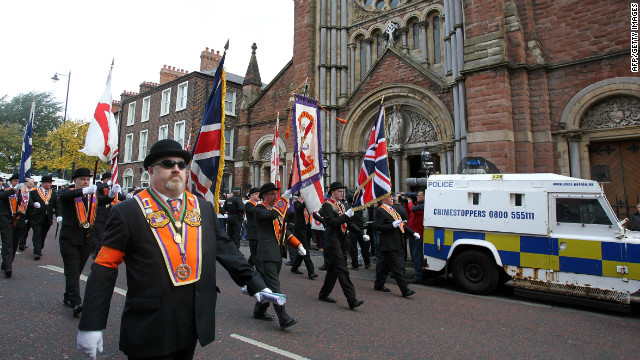 Orangemen march past St.Patrick's Catholic Church in north Belfast, Northern Ireland on September 29, 2012. STORY HIGHLIGHTS
Belfast, Northern Ireland (CNN) -- Thousands of people are taking part Saturday in a march through the Northern Ireland city of Belfast that many fear could inflame tensions between Catholics and Protestants. Over the course of the day, up to 30,000 people were expected to join the Ulster Covenant parade, held to mark the 100th anniversary of the signing of a pro-union document which helped shape Northern Ireland's history. The parade left from Belfast City Hall Saturday morning, headed for the grounds of Stormont, beside the Parliament Buildings. Concerns over potential disorder along the route center have focused on an area near St. Patrick's Church, where violence flared up between Catholics and Protestants earlier this month. The parade passed near the flashpoint Roman Catholic church, near the city center, without incident Saturday morning but must still return along that route in the evening. Hundreds of police officers are stationed along the route in that area, with many more elsewhere in the city, as the Northern Ireland police service braces for possible trouble. Violent clashes flare in Belfast Historic handshake: Queen, ex-IRA leader Symbolic handshake marks end of violence About 2,000 people took part in the morning parade feeding into the main demonstration, in which tens of thousands are expected to take part. The parade, a special event for the Ulster Covenant centenary, is expected to be one of the biggest held in years. Hundreds of parades take place across Northern Ireland each year, the majority involving the Protestant Orange Order and associated organizations, although pro-Irish nationalists also have marches.
The Northern Ireland Parades Commission rules on which marches are allowed to take place and which are banned, in an effort to keep friction to a minimum. Most parades pass off peacefully, but when members of one community march near or through neighborhoods dominated by another, violence sometimes occurs. The rioting in Belfast earlier this month, which left dozens of police officers injured, was some of the worst seen by the city in years. Tensions have been high all summer, and behind-the-scenes talks over Saturday's highly symbolic parade did not succeed in brokering a compromise between the Catholic and Protestant communities over the staging of the event. The Ulster Covenant was a document signed in 1912 by nearly half a million people in opposition to steps by the government in Westminster to introduce "Home Rule," or self-government, in Ireland within the United Kingdom of Great Britain and Ireland. The majority of the island gained independence in 1921, following two years of conflict. But six of the nine counties of the province of Ulster chose to stay in the United Kingdom, eventually becoming the country of Northern Ireland. In the late 1960s, the conflict between mainly Protestant unionists, who want Northern Ireland to remain part of the United Kingdom, and largely Roman Catholic nationalists, who want it to be reunited with the rest of Ireland, exploded into a political and sectarian war, known as the Troubles. The three decades of ensuing violence between the Irish Republican Army and loyalists claimed the lives of more than 3,000 people, most of them north of the border. While the Good Friday Agreement of 1998 effectively ended the conflict, suspicions between Catholics and Protestants remain. Under the terms of the landmark accord, terrorist groups on both sides dumped their weapons, and Sinn Fein, the political affiliate of the IRA, now work with pro-British politicians in Northern Ireland's power-sharing government.
The Troubles in Northern IrelandA complete history of the conflictBelow please find information on the main elements of the British and Northern Irish security forces which operated in Northern Ireland during the Troubles. The British Army was deployed in Northern Ireland in 1969 in order to protect Nationalist areas from Loyalist Attack. For this reason the British Army was warmly welcomed in nationalist areas. However the army appeared reluctant to take on loyalist mobs and often allowed them to enter and burn nationalist areas at will. Many in the nationalist community came to see the British Army as an occupational army which was sent in to prop up the failing sectarian government. Following it's shooting dead of 14 unarmed civilians in Derry in 1972, the army was rounded on by the majority of the nationalist population, many of whom went on to join groups like the IRA. In 1979 the British Army suffered it's worst loss of life in a single attack since World War II when 18 soldiers were killed in a Provisional IRA ambush in Warrenpoint, County Down. The British Army had limited success against the IRA, less than 120 IRA Volunteers were killed in combat, compared to almost 800 members of the British Army. The British Army found it particularly difficult to operate in rural areas of Northern Ireland such as south Armagh, where it was inable to carry out mobile-patrols due to the frequency of ambushes in the area. At it's height the British Army had almost 35,000 troops stationed in Northern Ireland. The Ulster Defence Regiment was a locally recruited regiment of the British Army. Almost all of the recruits came from the Protestant population. UDR members were frequently assassinated while off-duty by the Provisional IRA and INLA. It also emerged that the UDR was actively colluding with loyalist death squads in the murders of individuals perceived as sympathetic to republicans. In an interview for a document entitled "Subversion in the UDR", a commander in the regiment admitted that about 15% of his men were also members of Loyalist death squads. Such collusion became obvious following the Miami Showband Massacre. On the 31 July 1975 a popular Irish band were stopped by a fake British Army patrol and forced out of their van.The patrol was actually UVF members in UDR uniform. While being questioned, another group of UVF men attempted to place a bomb in the band's van but it exploded prematurely killing the two men who were carrying it. The rest of the UVF men then shot the band members, killing three of them, and fled. The next day it emerged that the two dead UVF men were in fact a Major and a Lietenant in the Ulster Defence Regiment. The UDR was eventually disbanded and replaced by the Royal Irish Regiment in 1992. The Royal Ulster Constabulary (RUC) was the police force of Northern Ireland from 1922 until 2001. The force was overwhelmingly Protestant and almost entirely unionist. It was accussed by many people of being little more than a sectarian militia although this was rejected by the British and Stormont governments. The RUC lost over 300 members during the Troubles with a further 9,000 injured. The majority of casualties were inflicted by the Provisional IRA. In 1983 the RUC was classified as the most dangerous police force in the world in which to be a member.In 1969 the RUC, along with the USC, helped to increase tension by attacking civil rights marchersin Derry, they were also accussed of standing back and allowing loyalists to attacks a civil rights march at Burntollet Bridge. The RUC was heavily criticized by international human rights groups over it's involvement in the killing of a number of civilians, many of whom were shot with plastic bullets. It was also accussed of torturing and assaulting suspects during questioning. The RUC suffered heavy casualties during the Troubles, many of it's officers were shot or blown up by the IRA or INLA. It's heaviest loss came in 1985 when nine RUC officers were killed when the Provisional IRA carried out a mortar attack on an RUC barracks in Newry. The RUC, along with the British Army, was also involved in the shooting dead of a number of unarmed members, or suspected members, of the IRA and INLA. These murders led to claims that the RUC was involved in a Shoot to Kill policy against suspected republicans. In April 2003 the Stevens report found that elements within the RUC had sanctioned the murders of suspected republicans and republican sympathizers. The force was replaced in 2001 by the Police Service of Northern Ireland (PSNI). The Ulster Special Constabulary, also knwon as the B-Specials, was a reserve police force which operated in Northern Ireland from 920 until it was disbanded in 1970. The USC was almost completely composed of Protestant unionists. The recruitment of Catholics or nationalists into the force was discouraged by the Stormont government. The group was heavily criticized by most Irish nationalists and also the British military who regarded them as undisciplined and openly sectarian. On a number of occassions the USC fired into crowds of rioters and protesters, killing many civilians. Due to it's openly sectarian nature and their involvement in the shooting dead of civilians, the British government eventually disbanded the force in mid-1970. The Special Air Service is a unit of the British Army tasked with counter-insurgency and hostage situations. The regiment was deployed in northern Ireland in the early 70's and tasked with taking on the Provisional IRA. The SAS was involved in the shooting dead of a number of IRA volunteers, most notably the Loughgall Ambush in which eight IRA Volunteers were killed, it's heaviest loss in the conflict. The SAS was accussed of a Shoot-to-Kill policy against suspected republicans, and to a lesser extent, loyalists. The Stalker Inquiry into a number of the killings found that the SAS had indeed carried out Shoot-to-Kill operations against armed and unarmed republicans. In Court the British government was found guilty of breaching Article Two of the European Convention on Human Rights. The SAS lost a number of soldiers in Northern Ireland. The highest ranking member to be killed was Captain Herbert Westmascott who was killed in a gun battle with the IRA in 1980 after being shot in the head with an M60 Heavy Machine Gun. 14th Intelligence Company is an element of British Intelligence which operated in Northern Ireland from 1970 onwards. The group has been accused by former members of the British Intelligence services, of involvement in a number of terrorist attacks, including the Dublin & Monaghan bombings of 1974 which killed 33 civilians. The group was particularly active in Belfast and Armagh. In 1992 three of it's agents who had infiltrated the Provisional IRA carried out the murder and secret burial of a young woman who had discovered that they were intelligence agents. The three agents were subsequently kidnapped by the Provisional IRA and confessed on tape to being Intelligence operatives. Their bodies were later found at three seperate locations in south Armagh. The group has also been accussed of involvement in the Miami Showband massacre during which 3 civilians were shot dead and two members of the UDR were killed by their own bomb in a botched attack on a popular Irish showband. Captain Robert Nairac, an SAS member and member of 14th Intelligence has been accused by nationalists, ex-intelligence officers and one of the survivors of the attack of commanding the unit on the day. Nairac was subsequently kidnappedny the IRA. His body has never been found although a former IRA member has stated that his body was placed in a meat grinder and fed to pigs. The unit is believed to have been active throughout the conflict and it's main task was the infiltration of paramilitary groups. It seesm to have been far more succesful at infiltrating loyalist groups and as such exerted a controlling influence on these organisations, particularly the UDA. It has also had high placed informers in the IRA although many of it's agents were exposed or executed. The Police Service of Northern Ireland (PSNI) was formed in 2001 to replace the Royal Ulster Constabulary (RUC). As part of the Peace Process, republicans had demanded that the RUC be replaced or disbanded due to it's perception as a Protestant militia among the nationalist population. Policing powers are currently controlled by the Stormont Assembly which includes both Republican and Unionist political parties. The PSNI also has a mandatory 50/50 recruitment policy to ensure that both Catholic and Protestants are equally represented in the force. It is hoped this will help boost community conifidence in the Police Service and make it acceptable to all sections of the Northern Ireland community. Currently around 65% of the PSNI comes from Protestant backgrounds and 27% from Catholic backgrounds. Catholics account for 44% of the population of Northern Ireland. In comparison, only around 7% of RUC members were Catholics. Until 2007 Sinn Féin did not support the PSNI but this changed in 2007 after it was informed that Policing and Justice powers would be devolved to the Northern Ireland Assembly. The PSNI suffered it's first casualty in 2009 when one of it's members was shot dead by the Continuity IRA in Craigavon. Special Patrol Group (SPG)The Special Patrol Group was a Police unit in the RUC tasked with counter-terrorism. The group has been accussed and found guilty of involvement with loyalist murder squads and terrorist activities. Members of the SPG based in Armagh are quoted as saying that they considered loyalist gangs to be allies, and as such, aided them in carrying out the sectarian murders of Catholics. In 2006, a report into the unit based in Armagh found that between 1975 and 1976 it had been responsible for the murders of 11 Catholic civilians, including the deaths of the Reavey and O'Dowd brothers. The following day, in response to the killings, the South Armagh Republican Action Force machine gunned ten protestant workmen to death and seriously wounded another. In 1980 two members of the Special Patrol Group were arrested and charged with a number of murders. Following this, the SPG was stood down and disbanded by the RUC.In Belfast, a number of members of the SPG were killed in Provisional IRA ambushes in west Belfast. |
Karibu Jukwaa la www.mwanabidii.com
Pata nafasi mpya za Kazi www.kazibongo.blogspot.com
Blogu ya Habari na Picha www.patahabari.blogspot.com
Kujiondoa Tuma Email kwenda
wanabidii+unsubscribe@googlegroups.com Utapata Email ya kudhibitisha ukishatuma
Disclaimer:
Everyone posting to this Forum bears the sole responsibility for any legal consequences of his or her postings, and hence statements and facts must be presented responsibly. Your continued membership signifies that you agree to this disclaimer and pledge to abide by our Rules and Guidelines.
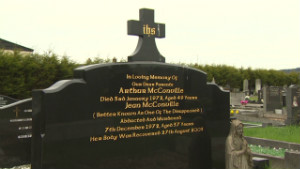
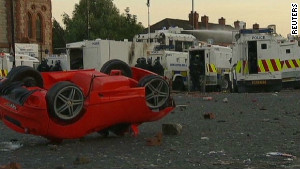
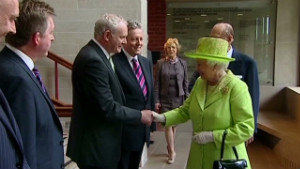
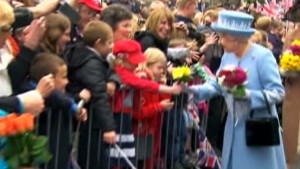
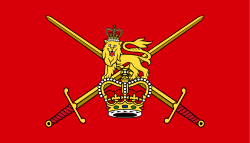



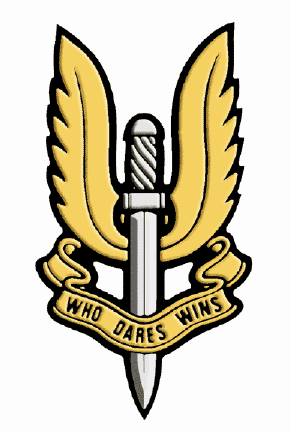


0 comments:
Post a Comment